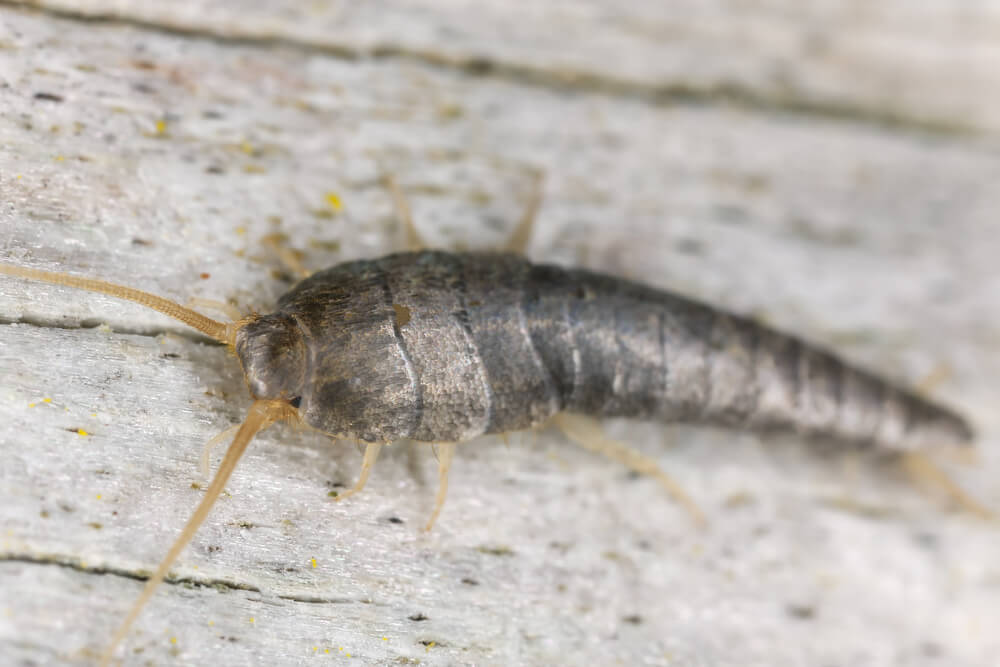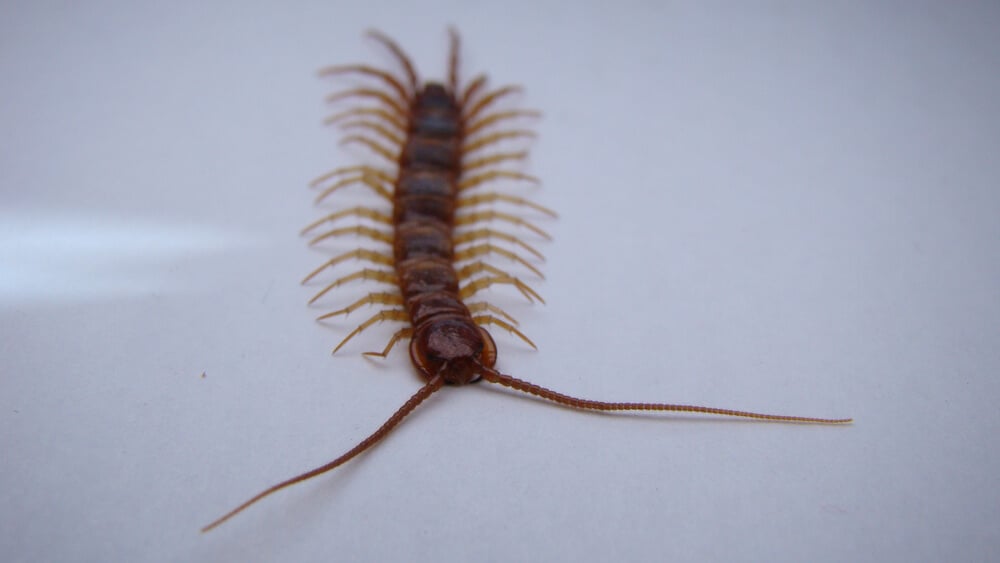With over a million different species of insects and bugs on the planet, it’s not surprising that you’d occasionally see an unfamiliar pest in your house. However, some of these lesser-known pests can be startling if you don’t know what they are or what they might do to you. That’s why we put together this primer on some of the weirdest, wildest-looking pests in our part of the world.
Read on to learn about these shy crawlers that often lurk in the shadows. While most of them are harmless, you probably don’t want them in your house. That’s where Plunkett’s comes in. We take care of all invasive pests, no matter how unique or scary.
Earwigs

The European earwig is a common pest in the Midwest. They measure around ⅝” long and have flat, long, dark-brown bodies with orange appendages. Earwigs’ distinct characteristics are the forceps-like pincers on their lower abdomen. These are called “cerci,” and earwigs use them to capture prey, defend themselves, and fold their wings. While earwigs rarely fly, they do have two pairs of fan-like wings that elaborately fold down against their torso. You can see them in flight in this video.
Earwigs generally stay outside and favor moist environments, but they can’t survive on highly-saturated ground or in freezing temperatures. When it rains heavily during the spring or when days turn colder in the fall, earwigs may make their way into your basement or under your rugs. Earwigs in your house typically hide in dark, damp areas or cooler places.
Do Earwigs Bite?
Though they can technically bite, it’s more likely that they will use their cerci if threatened. Earwigs are not poisonous or particularly strong and it’s unlikely that they will harm you.
Why Are They Called Earwigs?
This comes from an antiquated myth that they crawl into your ears and lay their eggs inside your head while you’re sleeping. Don’t worry, this has long since been proven untrue.
Silverfish

Often referred to as a “bug that looks like a shrimp,” silverfish are tiny silver or gray-blue insects shaped like tear drops. These nocturnal crawlers only grow to 12 to 19 millimeters in length and become most active at night. During the day, silverfish hide and reproduce. They lay up to 20 eggs at a time and silverfish eggs hatch quickly, leading to swift population increases. Baby silverfish look like smaller versions of the adults and develop their scales over a period of months and through several molting instars.
Though they can survive just about anywhere, silverfish prefer dark, high-humidity environments. They eat carbohydrates, sugars, and starches found in just about anything. They’re known for infesting shampoo, books, glue, silk, food, and flour. You might find them in nearly any room of the house, especially humid rooms like bathrooms, laundry rooms, storage, and pantries. One telltale sign of silverfish infestation is the tiny, dust- or pepper-like feces left behind when they feed. If your strange insect is small, fast, silver, active at night, and hard to find, it’s probably a silverfish.
Do Silverfish Bite?
Silverfish don’t bite, nor are they harmful to human beings but they can become a nuisance.
Firebrats

Firebrats are bugs that look like silverfish but are darker, with gray or brown coloration instead of silver. They range from ⅓-½” in length. Silverfish and firebrats have long antennae and three long, thin appendages at their tails, but firebrat antennae are longer than their bodies. Firebrats can also be distinguished by their mottled scales that look like hair bristles.
Firebrats are more common than silverfish in the Midwest and prefer warmer temperatures over 90 degrees. Look for them in warm, dry areas of your home like attics. They seek out hot water pipes and warm air vents but can sometimes be found in bathtubs and sinks where they fall in but are unable to climb out.
Are Firebrats Dangerous?
Like silverfish, firebrats don’t pose an immediate threat to humans. They don’t bite or carry disease but they can contaminate food. Firebrats may be found in cupboards or food shelves where they feast on dry foods like flour and cereals, similar to moths and other pantry pests.
House Centipedes

That long bug with lots of legs that you see in the basement or bathroom is probably a house centipede. This species of centipede is yellowish, brown, or gray-yellow. They’ll have bands of brown striping on their torsos and long legs. The longest pair of legs might be up to twice the length of the centipede itself. House centipedes also have large, black eyes.
The most unsettling thing about house centipedes is their speed. This species of centipede can reach top speed rapidly, and they move with jerking lunges. Their agility benefits them in catching prey like spiders and insects. They fear humans and will run for cover if encountered. House centipedes seek dark, moist, enclosed environments. They’re often found under low furniture, rugs, floorboards, or in cracks and crevices. However, you may be surprised to know that centipedes can actually be beneficial. This is because they eat other insects!
Do Centipedes Bite?
House centipedes can bite humans and administer venom if cornered, but don’t worry neither the bite nor the venom is dangerous. To care for a house centipede bite, keep the area clean, use ice to reduce swelling, and take aspirin or an anti-histamine as necessary. If you have a severe allergic reaction, including a high fever, see a doctor immediately.
Millipedes

Millipedes can be described as “a brown or black worm that looks like a centipede.” While they don’t actually have 1,000 legs, their legs are numerous and run down their torso from head to abdomen. Most millipedes in your house will be about 2.5 to 4 centimeters long, though they can grow up to an inch or more.
Millipedes vs Centipedes: What’s the Difference?
- Millipedes have short legs and centipedes have long legs
- Millipedes have two pairs of legs per body segment vs one
- Millipedes have rounded or cylindrical bodies and centipedes have flat bodies
- Millipedes are slow moving and centipedes are fastMillipedes are herbivores whereas centipedes are carnivores
Like other pests on this list, millipedes are attracted to moist, dark environments. They seek out decaying plant material in areas like garages and tend to remain hidden. Females will lay up to 300 eggs in the soil and legless larvae will hatch after a few weeks.
When threatened, millipedes produce a foul-smelling odor but have no other kind of defense other than curling into a tight spiral. Millipedes are not aggressive and can’t harm humans.
Pest Control for Strange Bugs (and Familiar Ones)
No matter how strange, intimidating, or pervasive your pest infestation is, you can count on the experts at Plunkett’s to handle it. We provide safe and effective pest control for all invasive pests in homes and in businesses. For help identifying and eliminating bugs and insects, contact Plunkett's today.









